The Best Suspension Kits and Everything You Should Know

When a car rolls off the assembly line, chances are its suspension is tuned more for comfort than performance. While some vehicles do aim to offer a sportier driving experience, automakers tend to leave room for upgrades. For the most part, suspension upgrades are some of the first and most popular upgrades made by car owners today, and a proper upgrade offers many benefits in terms of safety and performance.
As you can imagine, the suspension on your vehicle is complex, which means most car owners don’t have a complete grasp of how they truly work. Luckily, many aftermarket companies offer full kits that will allow you to upgrade your suspension without having to search high and low for individual parts. Upgrading your car’s suspension with a proper kit not only saves you time, but money as well.
In this article, we’ll take a look at some proven suspension kits that cover a wide range of makes and models. Keep in mind, while we do focus on a specific application, many of these manufacturers offer products for other makes and models. Read on if you want to get a clearer idea of what to look for when shopping for suspension kits, and what to avoid.
To learn more about suspension kits, refer to our table of contents.
Table of contents
- 1. Rough Country Suspension Leveling Kits
- 2. Detroit Axle Complete Suspension Kits
- 3. Supreme Suspensions
- 4. YITAMOTOR Lift and Leveling Kits
- 5. Bilstein Shock Kits
- 6. Drive Tech America (DTA)
- A Complete Guide to Aftermarket Suspension Upgrades
- The Main Components Behind a Suspension Upgrade
- When To Get A Suspension Upgrade
- Potential Drawbacks And When To Not Get A Suspension Upgrade
- How Suspension Upgrades Can Improve Vehicle Performance
- Misconceptions
- Final Thoughts
1. Rough Country Suspension Leveling Kits
Rough Country offers suspension leveling kits for a wide variety of trucks, designed to be a complete bolt-on solution. These kits offer increased ground clearance while leveling the front with the rear of the vehicle.
One of its more popular items fits the 1999-2006 GMC Sierra 1500 4WD and Chevrolet Silverado 1500 4WD, as well as the 2007 Silverado and Sierra 1500 Classic models. That particular kit features upgraded N3 shocks, which are nitrogen charged and offer the best of both worlds when it comes to highway driving and trail performance. Torsion keys included as part of the kit allow fine tuning of the torsion bar, with a 1" adjustable range from 1.5" to 2.5". With this kit, truck owners can fit up to 32" tires or up to 285/75R16 with factory backspacing. The kit also includes 3" rear blocks and shock spacers. The company estimates installation time to take 1 to 2 hours.
Rough Country's suspension systems come with a lifetime replacement warranty.
If you don't own a GMC Sierra or Chevrolet Silverado however, make sure to check out the rest of the company's offerings. If you're looking for a suspension leveling kit, Rough Country is one of the highest rated and popular manufacturers on Amazon.
Pros | Levels truck, includes torsion keys, warranty included |
Cons | May wear out boots as well as a vehicle's CV joints at an accelerated rate |
2. Detroit Axle Complete Suspension Kits
Detroit Axle has a more comprehensive suspension kit offering, with some packages covering all upper and lower control arms, ball joints, inner and outer tie rods, and sway bars. This company's products focus more on the other suspension components that are often overlooked. In other words, these aren't springs and shocks, these are the other pieces that tie it all together.
Detroit Axle is a leading supplier of suspension components to OE vehicle manufacturers, so you know you're getting a quality product. They're manufactured in an ISO9002 Certified facility, and all its kits are extremely affordable. If you're searching for OE replacements to worn suspension components, this is a great starting point. Best of all, these kits are backed by a 10-year warranty.
Make sure you check the fitment for a particular product and that it works for your specific application.
Pros | American made in Ferndale, Michigan, responsive customer service on company website, quick shipping available |
Cons | Some complaints of loose ball joints |
3. Supreme Suspensions
Do you own a Jeep and want to give it a lift? Supreme Suspensions has a variety of lift and performance kits, with a focus on the Grand Cherokee.
One of its full kits, which fits the 1993-1998 Jeep Grand Cherokee ZJ, includes 4 high crystalline spring spacers, 4 Pro Performance Series Shocks, 1 transfer case drop, installation hardware, installation instructions, and Pro Pack. Designed to maintain a factory ride quality, this kit offers a 3-inch front suspension lift and a 3-inch rear lift for your Grand Cherokee. It's an easy bolt-on solution that will take 2 to 4 hours to install, with no special tools necessary.
By increasing ground clearance, these lift kits not only improves the look of your Jeep, but allows you to fit larger custom wheels and tires. The company also offers 2-inch lift kits if you want some milder, and sells many of its parts separately.
Pros | Designed by ASE (Automotive Service Excellence) certified professionals, doesn't negatively alter driving quality |
Cons | Shocks are more suitable for off-road activities than highway driving |
4. YITAMOTOR Lift and Leveling Kits
If you're looking for an affordable lift and leveling kit, YITAMOTOR has products for the Ford F-Series, Chevrolet Silverado, GMC Sierra, Ram 1500, Nissan Armada, Nissan Titan, and Toyota Tacoma. The lift ranges from 2" to 3" depending on the application and helps eliminate factory rake while perfectly leveling the front and rear of the vehicle. This not only gives a noticeably more aggressive look to your truck, but provides additional fender clearance for larger wheel and tire packages. YITAMOTOR says these kits will maintain your original OEM ride quality, steering quality, and driving comfort.
Most of the kits are manufactured from 6061-T6 aircraft-grade aluminum billet, with heat-treated and hardened 10.9 grade pre-installed bolts. The anodized surface helps provide additional resistance to corrosion. Another benefit is that these kits are extraordinarily strong and light compared to spacers made of steel.
Each kit comes with everything necessary for 100% simple bolt-on installation, with the processing requiring no strut pre-loading, cutting, or modifying any factory parts. The company estimates it can be finished within 2 hours. YITAMOTOR's products come with a 2-year warranty and full money back guarantee.
Pros | Bolt-on installation, anodized anti-corrosive components, helpful customer support service and warranty included |
Cons | May alter camber |
5. Bilstein Shock Kits
An extremely well known and respected suspension manufacturer is Bilstein. If you're looking for replacement shocks, Bilstein offers a wide assortment for various makes and models at an affordable price. The company also has offerings for lifted SUVs and trucks, as well as ride height adjustable struts.
One of its more popular kits, for example, is the Bilstein 5100 Series shock kit for the Chevrolet Silverado and GMC Sierra. This kit includes front ride height adjustable and matching rear shocks, with the front shocks adjustable from 0 to 1.75" of lift, while the rear can accommodate up to 1" of lift. These shocks use multiple snap ring grooves to position the spring seat at different heights.
Depending on your budget, Bilstein also offers more affordable shocks that are intended to be direct OE replacements. But that doesn't mean it doesn't have high performance options. The B8 is a high performance shock and comes with a lifetime limited warranty if you're looking for something more aggressive.
Pros | Compatible with most stock and aftermarket springs, dual purpose: works on and off road |
Cons | Front shock adjustment only on some kits |
6. Drive Tech America (DTA)
If you need complete spring and strut replacements, Drive Tech America (DTA) has a huge lineup of OE replacements at an affordable price. The company even sells its products in pairs, if you only need to replace the front or rear assemblies rather than all four.
Many of its products are fully loaded complete sets that are safe and easy to install. DTA's struts are nitrogen gas charged with 4 lip teflon banded piston seal, micro-polished chrome plated piston rod, and all-weather SV3 fluid. The coil springs that are used are heat treated and powdercoated to ensure longevity and protection from corrosion. The spring seats are also insulated to the springs to ensure a quiet and comfortable ride, while neoprene boots and bump stops are used when applicable. All products come with a limited lifetime warranty.
Although some users report that these kits sit higher than the factory, it appears that's because their stock products have sagged over time from use. Experienced users do say that DTA's products offered noticeable improvements in handling.
Pros | Anti-corrosive coil springs |
Cons | Non-adjustable |
A Complete Guide to Aftermarket Suspension Upgrades
With so many different companies offering aftermarket suspension upgrades, consumers have plenty of choices when it comes to improving their vehicle's handling or even making their cars safer with the right accessories. Unfortunately, the suspension on your vehicle is one of the most misunderstood car components, even among professionals. The average, everyday driver can get by without having an in-depth understanding of how suspension works, but eventually components do wear out if they're not properly maintained.
For example, you may be shopping for factory replacement shocks after a few years of use. Or you could be an off-roading enthusiast looking to make your vehicle more capable off-road. Other drivers may be looking to improve the handling performance of their vehicle with some suspension upgrades.
For the most part, suspension upgrades may not be the cheapest, but they're a good place to start if you're looking to make some significant performance improvements. The proper parts and tuning can affect a variety of vehicle dynamics, including road holding, traction, and more. Now, we'll take a look at all the different aspects of a standard aftermarket suspension kit, highlighting what to look for, and what to avoid.
The Main Components Behind a Suspension Upgrade
Some modern vehicles leave the assembly line with some extremely complex suspension systems, which could comprise of hundreds of parts. Most suspension upgrades however focus on very particular components, which is what we'll focus on. Keep in mind however, other parts such as tires play a role in a vehicle's overall suspension performance. A high quality tire offers the traction you need to fully take advantage of your suspension. But for now, we'll detail some of the main components of any quality suspension upgrade.
1) Suspension Coilovers - Coilovers are one of the more versatile products available for a wide range of vehicles. Typically, coilovers wrap around a shock absorber in a suspension system, with a dust guard directly inside to protect the inner piston. If you're planning to upgrade your suspension to lower your car while enhancing its handling capabilities, coilovers should be on your shopping list. Since these are adjustable, you'll want to see its "drop range," meaning how much lower your vehicle can get when adjusted to the most bottom setting.
As you can imagine, no two coilovers are the same, unless they came from the same factory and are branded as different products. When choosing the right coilover for your car, you'll want to consider a few things.
- Does the coilover you're looking at allow you to adjust the ride height without compressing the spring?
- Will it even allow you to compress the spring?
- How much height adjustment does it offer?
Normally, adjustable coilovers will have an easy to locate dial at the base, which can be turned to either raise or lower the ride height of your vehicle. Other coils will require a couple spanner wrenches to loosen the rings so that you can adjust the coil to sit higher or lower. Afterwards, you simply re-tighten both rings to lock in your preferred ride height. More expensive and high-end coilover systems allow adjustment from inside the cabin.
2) Struts - The struts in your suspension system serve as sort of a second filter, designed to absorb excessive bumps while also supporting the springs. In fact, struts are the component that does the most to aid in ride comfort, preventing you from feeling every crevice or bump on the road while you drive. In most suspension systems, struts are the highest up component and attached to the chassis.
3) Suspension Bushings - Although these components are small, suspension bushings are an important part to the suspension system. These rubber made components look similar to washers and serve multiple purposes. First, they're designed to help regulate joint activity within the suspension system, while helping keep bumpiness to a minimum. They also serve a purpose by helping manage noise levels, so they're often located at the joint, among other places, in your typical suspension system. Bushes also act as a mediator between larger components, so when they wear out, they'll be one of the main causes for sudden bumpiness while driving.
It's important to replace old bushes once they wear out, since worn bushes could allow for other suspension components to come in contact with one another. It's very likely worn bushes won't go unnoticed however, so if you feel something strange occurring with your suspension, it's a good place to start. If you're planning on lowering your vehicle, bushes play an even more important role, as they help prevent a vehicle from bottoming out.
Generally it's a good idea to upgrade your bushings and the stiffer they are, the better. Factory bushings are typically made from rubber, while some aftermarket offerings are manufactured from other material such as nylon, which is better quality. Those bushings tend to do a better job at easing any tension between moving parts, while also preventing metal-on-metal contact from happening.
4) Springs - Likely the most recognized part of any suspension system are the springs. Responsible for absorbing many of the potentially uncomfortable bumps you run into while driving, springs allow your tires to remain flexible while going uphill, downhill, or level driving. Technology has also allowed springs to come a long way since the original semi-elliptical leaf springs, which featured an arc-like design and were used as far back as the mid-18th century. While springs do sag over time, it's likely they're not the cause of a suspension system failure. If something occurs with your suspension, you'll likely want to look elsewhere first.
Most vehicles these days utilize what are called coil springs. Known for their ability to take a lot of pressure, coil springs may not contribute towards a smooth commute. Other newer vehicles may use coilover springs, which serve as a balance between overall performance and comfort. If you're shopping for aftermarket kits that lower your vehicle, those tend to have much stiffer springs to prevent excessive wheel movement. That's because when a vehicle is lowered, it's only a matter of inches before you're bottoming out. Keep in mind that stiffer, lowered springs doesn't always mean your car is going to perform better. In fact, excessively stiff springs can be detrimental to braking performance, as well as acceleration speeds.
When looking at aftermarket suspension upgrades, you're more than likely going to run across lowered springs. But a lowering kit is just one type of suspension upgrade, and like any aftermarket component, there are strengths and weaknesses. Lowered suspensions are popular with cars, since they do improve cornering and traction. At the same time, comfort is usually compromised in exchange for the enhanced performance. In addition, it could affect a vehicle's camber and the rate at which tires wear out. In terms of vehicle responsiveness and a more aggressive appearance however, lowering springs are hard to beat.
As we just mentioned, lowering a vehicle will naturally affect wheel alignment. Camber kits are available to help re-adjust your vehicle after lowering, and these are normally essential to restore proper wheel alignment. These are especially important if you're using aftermarket tires that exceed a suspension system's geometrical range, since they a tendency to tilt.
5) Anti-Roll Bars - Designed to help facilitate a healthy chemistry between both sides of your car are anti-roll bars. These help suspension systems have even weight distribution, which means when taking corners, your vehicle's weight is evenly distributed to all four tires. This way, there's some synchronicity between the suspension as a whole and a significant amount of weight isn't unevenly placed on one side of the vehicle. This also helps keep the vehicle level, improving overall handling and saving tires from excessive wear and tear.
Also known as sway bars, anti-roll bars tend to be the first suspension upgrade some people make on their vehicle. Without anti-roll bars, your vehicle will have a tendency to roll, especially around sharp corners. The torsion bar, which is the centerpiece of an anti-roll bar, is what twists while driving. On each side of the torsion bar are lever arms, which prompts this twisting motion. So while cornering, a good anti-roll bar almost acts like an additional spring within the suspension system.
6) Dampers - The last component we'll detail are dampers. Without them, a suspension system can't properly function, since they act as a sort of outlet for the energy springs create while driving. Dampers are what allow a car to not continue rocking for long periods of time when you travel across a bump, and you'll likely notice driving to be a more unpleasant experience if your dampers begin to fail.
Adjustable dampers are available with the aftermarket and can often be found on some coilover kits.
When To Get A Suspension Upgrade
Suspension upgrades aren't necessarily for the performance-minded car enthusiast or off-roader. For the average driver, you may want to consider suspension upgrades to improve your driving experience, especially if components in your suspension are worn. For example, bad or faulty shocks can get in the way of even weight distribution, reducing your car's ability to handle corners. Bad shocks are also the reason vehicles experience the automotive phenomenon known as "wheel hop." Also, if your car's brakes feel like they're dangerously unresponsive, your car may benefit from suspension upgrades. So when and how do you know if you should upgrade your suspension?
The most important thing before deciding whether you want to upgrade your suspension is to determine the kind of driver you are, and what level of performance you expect from your vehicle. In some cases, you may be driving your vehicle harder than you think, causing premature wear and tear on your suspension components. If that's the case, there's a possibility you may not want to replace those components with factory units.
Once you understand what sort of performance you're expecting, you can start shopping for the right products. Maybe you're just looking to upgrade your suspension to make it more comfortable and easier to tow. If that's the case, you may only need aftermarket rear springs for your vehicle. A good indicator of whether you need aftermarket suspension while towing is whether your vehicle sags at an uneven height while towing. This normally should not happen, especially with an upgraded suspension.
If you notice the tires on your vehicle are wearing quicker than what's normal, there's a possibility one of the shocks on your vehicle has failed. Keep in mind, as we mentioned before, premature tire wear can also be a result of aftermarket suspension upgrades that haven't received a proper alignment or camber adjustment.
Upgrading your suspension can also be useful if you feel like your vehicle has the potential for better handling. Meanwhile, if you drive a truck or an SUV, suspension upgrades are particularly important for towing or going off road. At the end of the day, the necessity for upgrading your suspension comes down to your intentions and what you use your vehicle for on a daily basis.
You may also want to consider a suspension upgrade if you're planning on rigging a snow plow to the front of your truck. This way, the weight distribution on your truck isn't drastically altered. If you choose to perform these tasks without upgrades to your suspension, you possibly risk damaging your truck and wearing out your bushings prematurely, resulting in components having metal-on-metal contact. This is especially important if your stock suspension system has already endured some wear and tear, which means it may naturally be a good time to upgrade your suspension.
Potential Drawbacks And When To Not Get A Suspension Upgrade
It may sound at this point that all the benefits of upgrading your suspension outweigh the negatives, but that's not the case. Not every vehicle or situation requires you to upgrade your suspension, especially if comfort is your main priority when driving. If a suspension upgrade results in lowering your vehicle, that may not necessarily be ideal for an everyday commuter car. Not only is your car closer to the road, causing issues with speed bumps and similar objects, but your vehicle will have a much harsher ride. When lowering you car's center of gravity, it may result in better handling, but you'll start feeling every bump on the road.
There's a good possibility your factory suspension system suits your everyday driving style. If that's the case, you may not have much to gain by upgrading some components. Sure, there's always the chance your car may perform better, but if that doesn't necessarily appeal to you, why spend the money? Truth be told, an upgraded suspension isn't for everybody and they are more ideal for performance enthusiasts, truck owners, and those looking to go off-road.
Some driving activities however, will naturally call for suspension upgrades and your vehicle may actually be dangerous without them while performing those activities. A ruined suspension system could end up being more costly than simply upgrading your suspension to begin with.
How Suspension Upgrades Can Improve Vehicle Performance
Upgrading your suspension can benefit a vehicle in an assortment of ways. For example, a vehicle that's often used for towing can benefit greatly from suspension upgrades. Not only can an upgraded suspension improve longevity on a vehicle's tires when towing, they can absorb and more efficiently distribute the pressures of towing to locations other than the rear tires. This sort of even distribution of power frees up the engine so that it can run at optimal performance while towing.
In addition, upgrading your suspension can directly affect your vehicle's traction ability. Generally, improvements in both braking and cornering are benefits to upgrading your suspension, and overall, any good suspension system should make a routine trip more pleasant. If your main goal is to make your ride as comfortable as possible, make sure to focus on a suspension system that is designed to neutralize bumps and absorb any sort of bumpiness felt from rough patches on the road.
Misconceptions
Not surprisingly, there are many common misconceptions when it comes to a vehicle's suspension system. Most vehicle owners may not be aware that your suspension requires regular maintenance. With use, dirt, grime, road debris, and even engine oil can build up on the rubber bushings in your suspension. It doesn't hurt to develop a good habit of checking and keeping those components in clean shape from time to time.
Another component is that lowering a vehicle automatically means it'll benefit from better handling and cornering. This is often the case, but you don't necessarily have to lower your vehicle just to get better handling. Upgrading your shocks and even your bushings could result in better performance, without the need of lowering your car. Along the same lines, a stiffer suspension doesn't necessarily mean your car will handle better. If your aim is to get better handling performance from your car, the focus is the chemistry between your shocks and coils, rather than the overall firmness of them.
Lastly, if you're purchasing or upgrading your tires, you'll want to make sure they're compatible with your current suspension system. Unfortunately not all suspension systems work perfectly with certain tires, and this could affect handling in a negative way.
Final Thoughts
In summary, there are plenty of suspension upgrades out there, but before you commit to one, there are several variables to take into consideration. Along with everything we have mentioned so far, you need to also consider the road conditions on which you normally drive. The aftermarket offers different types of suspension kits for various types of driving. For example, if you live up in the mountains, you may need to take hard corners on winding and occasionally icy roads. Or maybe you're towing on a regular basis, which puts more strain on your vehicle's suspension.
You also don't want to forget that your tires play an important role in getting the most from your suspension. Choosing the right tires will also requires you to pick a product for your specific road conditions and driving habits.
At the end of the day, your suspension system is designed to deal with more than just potholes on your drive to work—it ensures the overall stability of your vehicle. There isn't a one-size-fits-all solution for every vehicle, so you'll have to do plenty of research to determine just the right suspension upgrades for your vehicle.
We are committed to finding, researching, and recommending the best products. We earn commissions from purchases you make using the retail links in our product reviews. Learn more about how this works.
Photo credit: Timofeev Vladimir / Shutterstock.com

Jason Siu began his career in automotive journalism in 2003 with Modified Magazine, a property previously held by VerticalScope. As the West Coast Editor, he played a pivotal role while also extending his expertise to Modified Luxury & Exotics and Modified Mustangs. Beyond his editorial work, Jason authored two notable Cartech books. His tenure at AutoGuide.com saw him immersed in the daily news cycle, yet his passion for hands-on evaluation led him to focus on testing and product reviews, offering well-rounded recommendations to AutoGuide readers. Currently, as the Content Director for VerticalScope, Jason spearheads the content strategy for an array of online publications, a role that has him at the helm of ensuring quality and consistency across the board.
More by Jason Siu



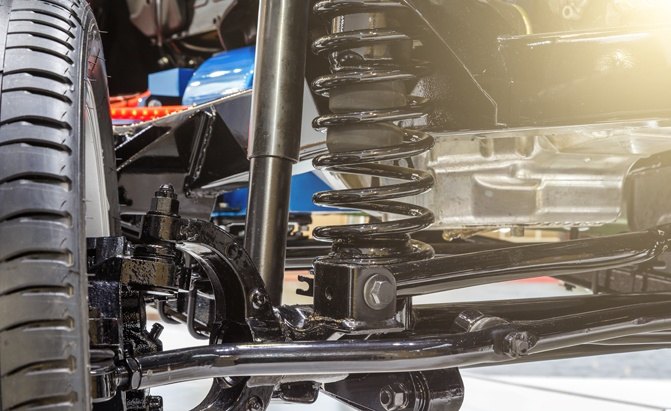























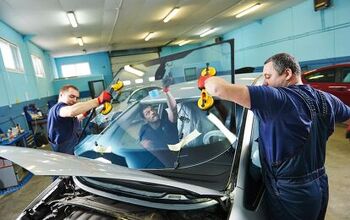


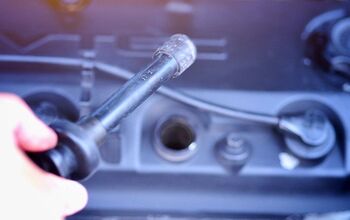



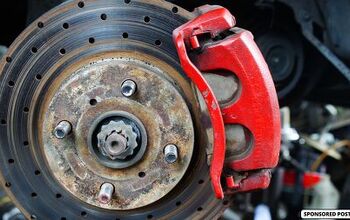



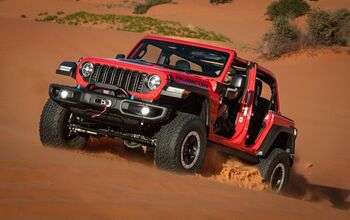






Comments
Join the conversation